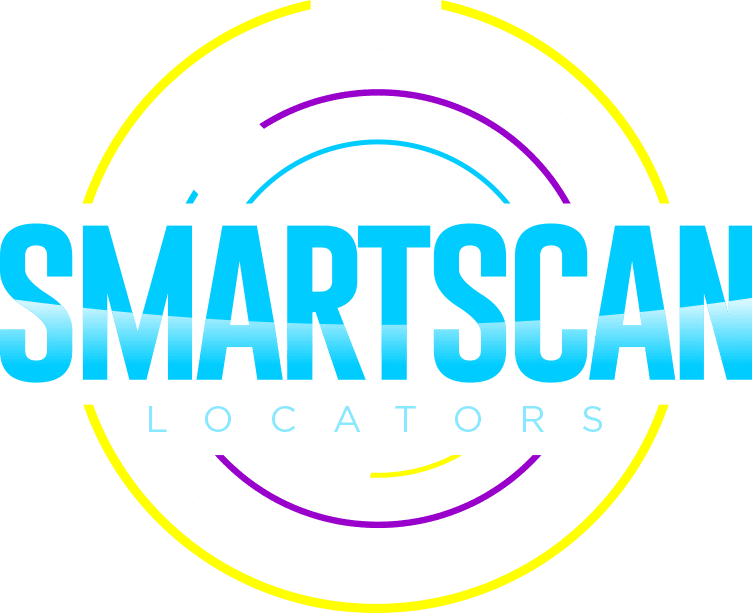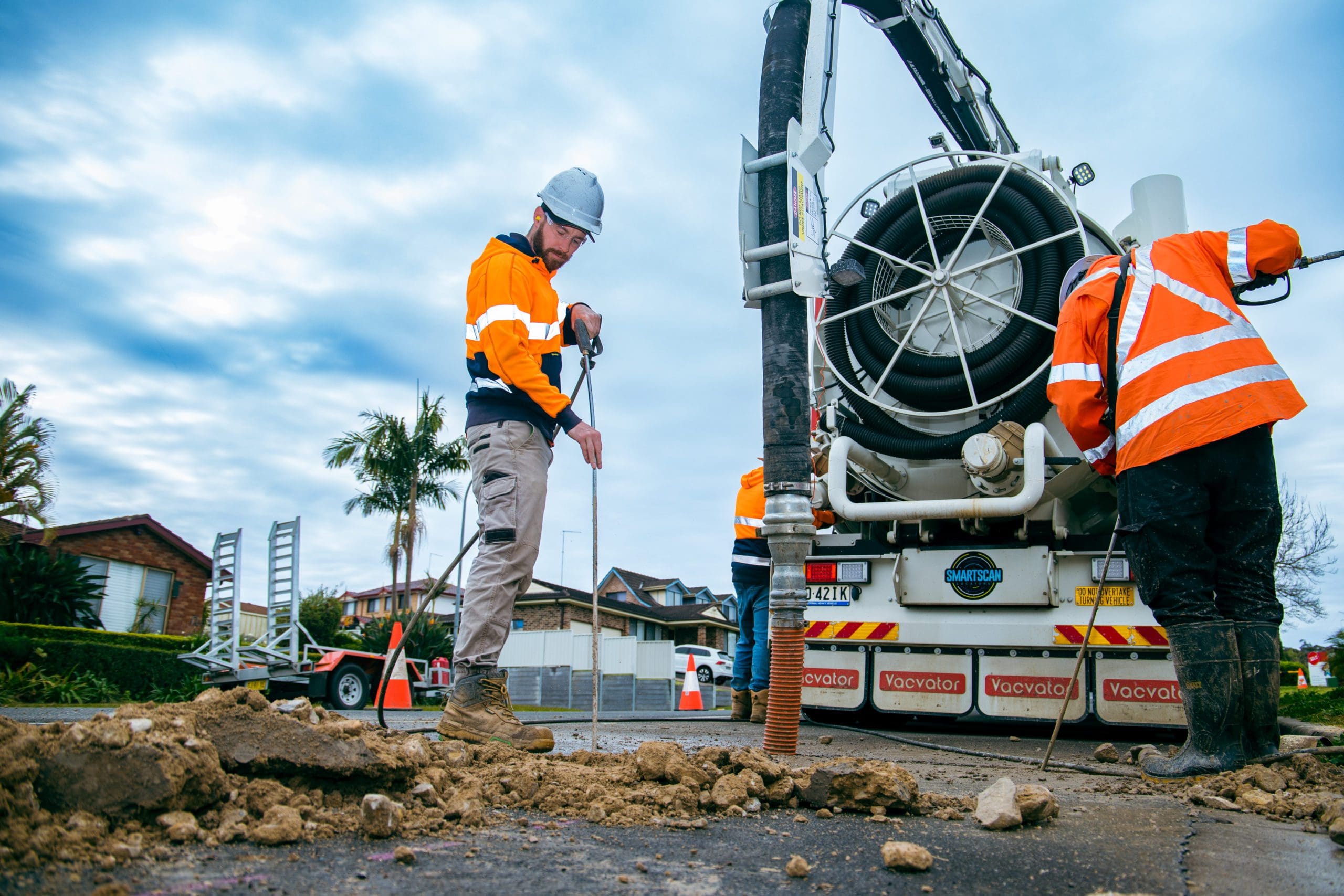Excavating without certified utility detection poses serious legal, financial, and safety risks. From high-voltage power cables to pressurised gas lines and critical telecom conduits, there’s a lot beneath the surface. If you’re digging in NSW, you need those utilities professionally located and verified before breaking ground.
Here’s a clear, regulation-aligned 10-step framework we follow at Smartscan Locators.
It’s how we make sure every excavation runs safely, smoothly, and within full compliance from day one.
Why Pre-Excavation Planning Is Legally and Operationally Mandatory in NSW
Pre-dig planning in NSW is governed by national safety protocols, local utility regulations, and infrastructure compliance frameworks. Contractors who initiate excavation without verifying underground conditions violate safety codes, insurance policies, and potentially civil law.
New South Wales mandates that any excavation project, whether on public or private property, must consult BYDA (Before You Dig Australia) and engage a certified locator to physically identify subsurface utilities. However, BYDA plans are only the first layer; accurate site safety requires real-time electromagnetic and radar scanning.
At Smartscan Locators, we deliver end-to-end site verification services, ensuring that no live utilities, pipes, or infrastructure are missed. Every year, emergency callouts confirm a consistent truth: most utility strikes result from skipping the pre-planning stage.
What Happens If You Dig Without Locating Services?
Excavating without confirming underground utilities exposes teams to the following risks:
- Life-threatening hazards: Striking high-voltage power lines or gas mains can cause electrocution, explosions, or asphyxiation.
- Severe penalties: Fines, legal action, and regulatory shutdowns are common if required procedures aren’t followed.
- Project delays: Emergency shutdowns, utility provider investigations, and remediation add days or weeks to construction schedules.
- Insurance nullification: Claims are denied when damage occurs without certified pre-locating.
Emergency response data shows that most underground strikes occur on sites without certified utility surveys. These incidents are preventable.
Smartscan Locators delivers on-site assessments using GPR, electromagnetic locating, and vacuum excavation, preventing both physical damage and administrative penalties.
Step 1. Confirm Your BYDA Notification and Engage a Certified Locator
Before You Dig Australia (BYDA) formerly Dial Before You Dig, is the official platform for lodging excavation intent and retrieving utility asset plans. However, BYDA plans do not replace certified on-site locating.
Engage a DBYD-certified locator such as Smartscan Locators to interpret plans and conduct a professional, in-field survey. Our team integrates BYDA plans with real-time electromagnetic and GPR-based detection, ensuring both marked and unmarked assets are accounted for.
Step 2. Conduct Electromagnetic Locating for Conductive Utilities
The first technical phase involves the use of electromagnetic (EM) locators to detect conductive utilities such as electrical cables, communication lines, and metallic pipes. EM locating is especially effective for tracing live services and is often used in conjunction with GPR.
Our technicians use receiver-transmitter pairs to induce a current into metallic assets, enabling accurate depth and path recording. This ensures all traceable services are visibly marked on-site using standardised surface indicators.
Step 3. Deploy Ground Penetrating Radar (GPR) for Non-Metallic Detection
Many underground utilities are non-conductive (e.g., PVC stormwater drains, concrete-encased fiber optics). For these, Ground Penetrating Radar (GPR) provides a critical solution.
GPR transmits radar pulses into the ground and measures reflected signals to build a subsurface profile. Smartscan Locators uses advanced GPR systems to detect:
- Non-metallic utilities
- Pre/post-tension cables
- Buried infrastructure beneath slabs
Our GPR scan services deliver data-rich subsurface maps, enhancing decision-making during excavation planning.
4. Request a Drafted Utility Map and Field Report
Once on-site utilities have been identified, it is essential to document and draft findings in a format acceptable to stakeholders and regulators. Smartscan provides:
- Field-marked service photos
- CAD-based utility maps
- Pipe attributes (depth, material, diameter, alignment)
Our utility reporting and mapping service supports AutoCAD and 12d outputs for integration into asset databases or permit documentation.
This documentation is essential for inclusion in excavation permits and internal safety files.
5. Use Non-Destructive Digging (NDD) for Asset Exposure
When services require visual confirmation, Non-Destructive Digging (NDD)—also called vacuum excavation, is the safest method. Smartscan’s fleet of vacuum trucks use dual-lance suction and pressurised water systems to:
- Pothole over marked assets
- Trench around sensitive pipes
- Dewater and remove drill mud
NDD avoids the risks of mechanical excavation, ensuring zero-contact with underground infrastructure.
6. Implement On-Site Safety Protocols and Marking Systems
Marking the location of underground assets is only the first step. Proper site protection includes:
- Barrier systems
- Color-coded utility markings
- Signage around known asset paths
Smartscan technicians implement Australian Standard AS5488 classifications to ensure each service is correctly risk-graded before work begins.
7. Coordinate With RMS and Utility Asset Holders
Some excavation projects cross or about regulated corridors (e.g., RMS roads, railway easements). In such cases, you must secure asset holder approvals prior to excavation.
Smartscan’s project consultancy team facilitates:
- Stakeholder engagement
- Workflow planning around critical infrastructure
- Submission of compliance reports
Failure to coordinate with asset owners can delay projects, void insurance, or lead to fines.
8. Conduct Test Pits and Soil Sampling Where Required
Some project scopes demand environmental or structural sampling. Our excavation team provides:
- Test pits for visual service validation
- Pavement and bulk soil sampling
- Environmental drill access
Using 3.5T to 21T excavators, our certified operators conduct precise digs with utility risk mitigation protocols in place.
9. Review and Sign-Off Final Utility Map With Stakeholders
Before machinery breaks ground, ensure the utility plan is verified by engineers and project managers. Smartscan delivers:
- Utility depth confirmation
- Cross-reference to construction layouts
- Format compatibility (DWG, 12d, PDF)
This step ensures consistency between physical site markings and digital design files, protecting your project from disputes and rework.
10. Pre-Plan Remediation and Site Reinstatement
Excavation and locating often result in surface disruption. Smartscan offers remediation services to restore:
- Asphalt, hot/cold mix
- Turf reinstatement with nitrogen-dressed soil
- RMS road surface to spec
We apply mechanical compaction methods to minimise post-work settlement and exceed stakeholder expectations.
Conclusion: Ensure Full Compliance Before You Dig
Every excavation project in NSW, whether a residential trench or major infrastructure development, requires structured subsurface investigation. The 10-step framework above integrates legal obligations, industry standards, and Smartscan Locators’ certified services into one actionable plan.
Using our integrated services for locating, scanning, mapping, and project management, you gain:
- Minimised excavation risk
- Faster asset verification
- Simplified regulatory compliance
- Reduced project downtime
Ready to Start?
Engage a Certified Locator Before You Dig:
📍 Contact Smartscan Locators
📧 [email protected]
☎ 1300 778 923

